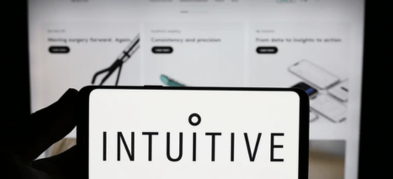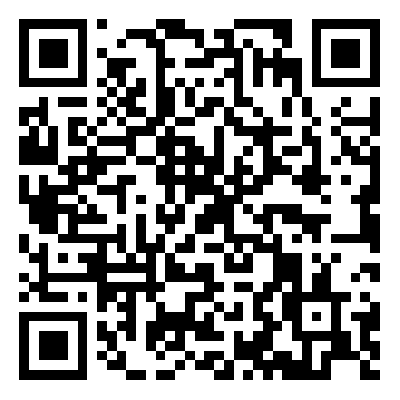
Ultima Markets App
Trade Anytime, Anywhere
Important Information
This website is managed by Ultima Markets’ international entities, and it’s important to emphasise that they are not subject to regulation by the FCA in the UK. Therefore, you must understand that you will not have the FCA’s protection when investing through this website – for example:
- You will not be guaranteed Negative Balance Protection
- You will not be protected by FCA’s leverage restrictions
- You will not have the right to settle disputes via the Financial Ombudsman Service (FOS)
- You will not be protected by Financial Services Compensation Scheme (FSCS)
- Any monies deposited will not be afforded the protection required under the FCA Client Assets Sourcebook. The level of protection for your funds will be determined by the regulations of the relevant local regulator.
Note: Ultima Markets is currently developing a dedicated website for UK clients and expects to onboard UK clients under FCA regulations in 2026.
If you would like to proceed and visit this website, you acknowledge and confirm the following:
- 1.The website is owned by Ultima Markets’ international entities and not by Ultima Markets UK Ltd, which is regulated by the FCA.
- 2.Ultima Markets Limited, or any of the Ultima Markets international entities, are neither based in the UK nor licensed by the FCA.
- 3.You are accessing the website at your own initiative and have not been solicited by Ultima Markets Limited in any way.
- 4.Investing through this website does not grant you the protections provided by the FCA.
- 5.Should you choose to invest through this website or with any of the international Ultima Markets entities, you will be subject to the rules and regulations of the relevant international regulatory authorities, not the FCA.
Ultima Markets wants to make it clear that we are duly licensed and authorised to offer the services and financial derivative products listed on our website. Individuals accessing this website and registering a trading account do so entirely of their own volition and without prior solicitation.
By confirming your decision to proceed with entering the website, you hereby affirm that this decision was solely initiated by you, and no solicitation has been made by any Ultima Markets entity.
I confirm my intention to proceed and enter this website Please direct me to the website operated by Ultima Markets , regulated by the FCA in the United KingdomImportance of Risk Management in Trading
Risk management is often considered the cornerstone of successful trading. Even the most profitable trading strategies can fail without adequate risk management. Here’s why it matters:
- Preservation of Capital: It ensures that traders can survive periods of losses and remain in the market long enough to take advantage of profitable opportunities.
- Reduction of Emotional Stress: Proper risk management reduces the anxiety that comes with potential losses, allowing traders to make rational decisions.
- Long-Term Sustainability: Successful traders focus on consistent growth over time, which is only possible through disciplined risk control.
Understanding Trading Risks
Traders must be aware of several types of trading risks. These can be due to the market volatility or liquidity of the trading instruments. Some trading risks are:
Market Risk: Market risk refers to the possibility of losses due to adverse price movements in the financial markets. It’s the most common type of risk traders face.
- A sudden drop in stock prices due to disappointing earnings
- Forex market volatility triggered by central bank decisions or geopolitical events.
Liquidity Risk: Liquidity risk arises when a trader cannot buy or sell an asset quickly enough without causing a significant impact on its price.
- Attempting to exit a large position in a thinly traded stock, leading to slippage.
- Trading exotic currency pairs with low liquidity.
Leverage Risk: Leverage amplifies potential profits but also magnifies losses. It increases the trader’s exposure to market movements, making small price changes more significant.
- A 1% price movement in a heavily leveraged position can result in a 10% change in account equity.
- Margin calls triggered by insufficient account balances to maintain leveraged positions.
Counterparty Risk: Counterparty risk refers to the risk of the broker, exchange, or counterparty failing to meet their financial obligations.
- A broker going bankrupt, freezing client accounts and funds.
- Counterparty default in over-the-counter (OTC) trades.
Systemic Risk: Systemic risk arises from events that affect the entire financial system, not just a specific market or asset.
- Financial crises like the 2008 global recession.
- Major geopolitical events disrupting global markets.
Psychological risks and emotional trading
Psychological factors often compound trading risks. Even the best trading strategies can fail if emotions interfere with decision-making. Common emotional risks include:
- Fear: This can lead to premature exits from trades or avoiding opportunities altogether.
- Greed: It drives traders to over-leverage or chase trades without proper analysis.
- Overconfidence: This leads traders to underestimate risks after a series of successful trades.
- Impatience: Encourages traders to deviate from their plans, entering trades without proper setups.
Setting Risk Management Goals
Risk management goals are essential because they are the foundation for a trader’s overall strategy. Every trader must have solid risk management goals, which must be followed with strict discipline.
Risk management goals matter as they help to:
- Define acceptable levels of risk to protect trading capital.
- Prevent emotional decision-making during volatile market conditions.
- Align risk-taking with financial objectives, ensuring consistency and discipline.
Trading without clear risk management goals is akin to sailing without a map—you might eventually reach your destination, but the journey will be unnecessarily uncertain and fraught with danger.
Key Steps to Setting Risk Management Goals
1. Determine Your Risk Tolerance
Risk tolerance is the risk or potential loss you will accept on each trade or over a period.
Factors affecting risk tolerance:
- Financial capacity: How much of your trading capital will you risk? Typically, experts recommend risking no more than 1-2% of your account per trade.
- Emotional capacity: How well can you handle losses without losing discipline?
- Experience: Newer traders often have lower risk tolerance, while seasoned traders may handle larger risks due to their understanding of markets.
A trader with a $10,000 account might decide to risk no more than $100 (1%) on any single trade. This ensures they can survive multiple losses without depleting their capital.
2. Define Risk-Reward Ratios
It measures the potential profit of a trade relative to its possible loss. A favourable risk-reward ratio ensures that you can still be profitable even if you lose more trades than you win.
Swing traders might aim for 1:2 or 1:3 ratios, while scalpers may accept lower ratios due to high trade frequency.
3. Set Daily, Weekly, and Monthly Loss Limits
Loss limits prevent traders from overtrading or chasing losses, which can spiral out of control. Traders must decide on a maximum loss percentage for their account per day or week (e.g., 5% daily limit or 15% weekly limit) and stop trading once the limit is reached.
4. Establish Capital Allocation Rules
Determine how much of your total capital to allocate to each trade, asset, or market. Avoid putting all your capital into a single trade or asset. Diversify to reduce exposure to individual market risks.
5. Set Time-Based Goals
Some strategies work better over short-term periods (e.g., day trading), while others require a long-term perspective (e.g., position trading). Day traders may set stricter stop-losses due to intraday volatility, while long-term investors might allow wider stop-losses to account for market fluctuations.
Tools and Strategies for Risk Management
Modern trading involves using various tools and strategies to manage risks effectively. These tools provide insights into the markets and help automate processes, reduce human errors, and increase overall efficiency. This section will discuss the most widely used tools and strategies to enhance your risk management approach.
Tools for Risk Management
There are many quantifiable tools that traders can use to mitigate trading risks. Traders usually use these tools independently or together.
Stop Loss Orders
A stop-loss order automatically exits a trade if the price moves against you to a specified level. Its purpose is to cap losses and protect your capital from excessive market downturns.
Traders usually use technical analysis to place stop-loss orders just below support levels or above resistance levels. However, they should avoid setting stop-loss orders too close to the entry price to prevent them from being stopped by normal market noise.
For example, if you buy Apple stock at $150 per share, setting a stop-loss at $145 ensures that your position is closed automatically if the price drops below $145.
Take-Profit Orders
A take-profit order exits a trade once it reaches a specific profit target, securing your gains. Its purpose is to automate profit-taking and reduce the temptation of staying in trades too long due to greed.
As a trader, you must set take-profit levels using your risk-reward ratio (e.g., aim for 2x or 3x your stop-loss distance). Also, you must adjust take-profits dynamically in trending markets to maximise gains.
For example, if you’re shorting the NASDAQ at 15,000 points, a take-profit at 14,800 points secures a 200-point gain when hit.
Risk-Reward Calculators
It is a tool for evaluating a trade’s potential reward relative to its risk. It aims to ensure that every trade offers a favourable risk-reward ratio, typically 1:2 or higher.
For best practices as a trader, you should use this calculator before entering trades to filter out those with low return potential. Also, stick to trades with a minimum 1:2 ratio to maintain a positive expectancy over time.
For example, a trade risking $50 to gain $150 has a 1:3 risk-reward ratio.
Position Size Calculators
It is another tool to calculate the correct trade size based on your account size, risk tolerance, and stop-loss distance. Its purpose is to prevent overexposure and ensure consistent risk management across trades.
As a trader, you should regularly update your calculations as your account balance changes. Furthermore, market volatility should be considered when setting stop-loss levels and position sizes.
For example, for a $10,000 account risking 2% per trade with a 50-pip stop-loss, a position size calculator might recommend trading 2 mini lots (20,000 units).
Volatility Indicators
Tools like the Average True Range (ATR) and Bollinger Bands that measure market volatility. It aims to help determine appropriate stop-loss levels and position sizes based on market conditions.
Traders should use ATR to adjust stop-loss levels dynamically in highly volatile markets. Additionally, they should monitor Bollinger Bands to identify potential breakouts or reversals.
For example, if the EUR/USD ATR is 100 pips, setting a stop-loss within this range might expose you to premature exits.
Strategies for Risk Management
Many qualitative strategies can help traders to mitigate trading risks.
The 1% or 2% Rule
The 1% or 2% rule limits the capital you risk on any single trade to a small percentage of your total account balance. This rule ensures that even during a series of losing trades, your account can survive and recover without depleting too much capital.
Traders must consistently use this rule, regardless of their confidence in a trade. Further, traders should scale down to 1% risk in volatile or uncertain market conditions.
For example, on a $25,000 account, risking 2% means you’d risk no more than $500 on any single trade.
Diversification
Diversification spreads your investments across different markets, assets, or instruments to reduce reliance on a single trade or sector. This strategy minimises risk as losses in one area can be offset by gains in another.
Further, diversification reduces portfolio volatility, resulting in steadier performance over time.
To properly diversify their trading, traders must spread trades across markets (forex, commodities, indices, stocks, etc.), geographies (between developed and emerging markets), and even between assets (mitigating the risks of riskier stocks with safe-haven assets like gold).
Using Correlation Analysis
Correlation analysis examines the relationship between two trading instruments to assess how their price movements relate. Correlations can be positive (prices move in the same direction) or negative (prices move in opposite directions).
With this strategy, you can avoid double risk, as trading correlated assets can amplify losses if both trades move against you. Further, it can reduce exposure to correlated instruments and improve portfolio stability.
An example of a positive correlation is the two currency pairs EUR/USD and GBP/USD, which often move in the same direction. Traders should avoid entering long positions simultaneously.
On the other hand, USD/JPY and Gold often move in opposite directions, which is a good example of a negative correlation. Traders can hedge risks by holding positions in both.
Trailing Stops
A trailing stop adjusts dynamically to lock in profits as the price moves in your favour. It automates the risk-taking process and removes the need for constant monitoring and emotional decision-making. It allows traders to maximise profits during strong trends.
Let’s say you have set up a trailing stop of 50 pips in a forex trading setup. If your forex pair rises from 1.2000 to 1.2050, your stop-loss moves from 1.1950 to 1.2000.
Numerous other tools and strategies exist for risk management. As a trader, you must find the ones best suited for your trading style, but strict discipline is a must.
Managing Leverage and Margin
Leverage is one of the primary advantages of trading CFDs, but it can be hazardous. With leverage, traders only need to raise a fraction of the capital required to take a prominent position in the market.
Leverage is expressed in ratios like 100:1, 50:1, 30:1, and 10:1. In the case of a 100:1 leverage ratio, traders only need to come up with a capital of $100 to take a position of $100,000 (100x of the initial value), while for 10:1, the capital requirement for a $100,000 position is $1,000 (10x of the initial value).
With leverage, traders can significantly increase their profitability from a trade. However, it can also magnify loss if the market moves against the position taken and can potentially exceed the initial investment. Many regulators mandate negative balance protection, meaning if the leveraged loss of an account exceeds the deposited capital, the positions in loss will be closed automatically.
An example of leverage in CFD trading:
You have decided to trade a CFD on the EUR/USD currency pair. You believe the price will rise, and your broker offers leverage of 30:1, meaning you only need to deposit 3.33% of the trade’s total value as a margin.
- Trade Size: $10,000
- Margin Required: $10,000 ÷ 30 = $333.33
With a deposit of just $333.33, you can take a $10,000 position. This leverage can significantly impact the trade’s outcome (profit and loss).
- If the EUR/USD price increases by 1%, you make $100 (1% of $10,000).
- Profit: $100 ÷ $333.33 = 30% return on your margin.
While this gain is impressive for such a small initial deposit, leverage works both ways.
Scenario 2: The trade moves against you
- If the EUR/USD price decreases by 1%, you lose $100 (1% of $10,000).
- Loss: $100 ÷ $333.33 = 30% of your margin lost.
You would lose your entire $333.33 margin if the EUR/USD pair drops 3.33%.
The offered leverage also varies with the underlying CFD assets. Usually, major forex pair CFDs have the highest leverage, while crypto CFDs (due to their volatility) have the lowest.
Trade with Ultima Markets
Ultima Markets is a fully licensed broker and a multi-asset trading platform offering access to
250+ CFD financial instruments, including Forex, Commodities, Indices and Shares. We
guarantee tight spreads and fast execution. Until now, we have served clients from 172
countries and regions with our trustworthy services and well-built trading systems.
Ultima Markets has achieved remarkable recognition in 2024, winning prestigious awards
such as the Best Affiliates Brokerage, Best Fund Safety in Global Forex Awards, and
the Best APAC CFD broker in Traders Fair 2024 Hong Kong. As the first CFD broker to join
the United Nations Global Compact, Ultima Markets underscores its commitment to
sustainability and the mission to advance ethical financial services and contribute to a
sustainable future.
Ultima Markets is a member of The Financial Commission, an international independent
body responsible for resolving disputes in the Forex and CFD markets.
All clients of Ultima Markets are protected under insurance coverage provided by Willis
Towers Watson (WTW), a global insurance brokerage established in 1828, with claims
eligibility up to US$1,000,000 per account.
Open an account with Ultima Markets to start your index CFDs trading journey.












